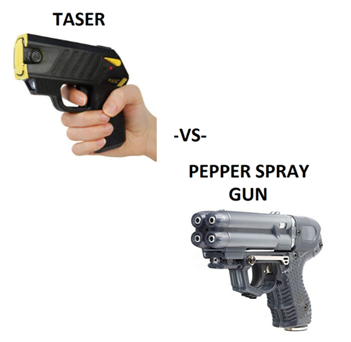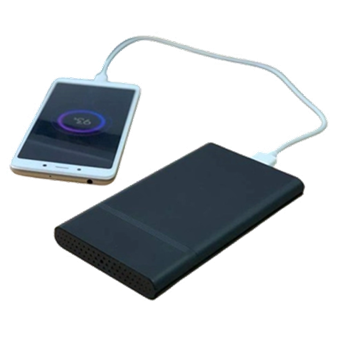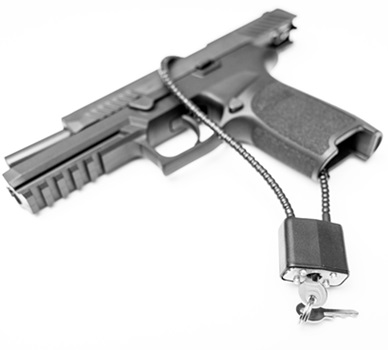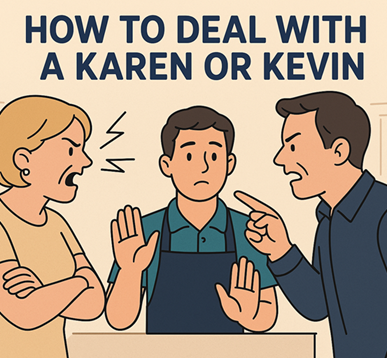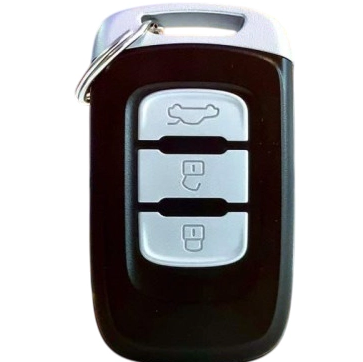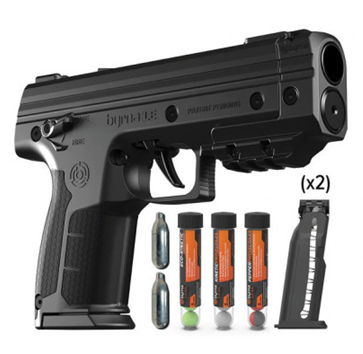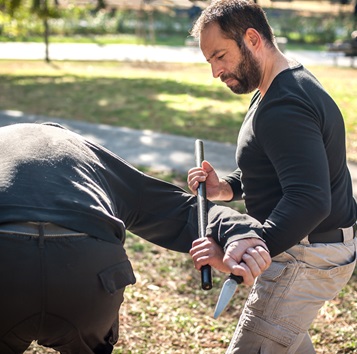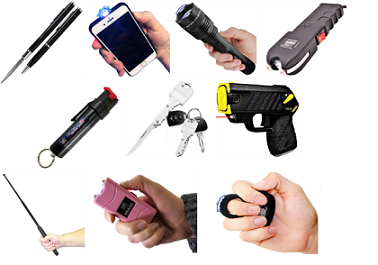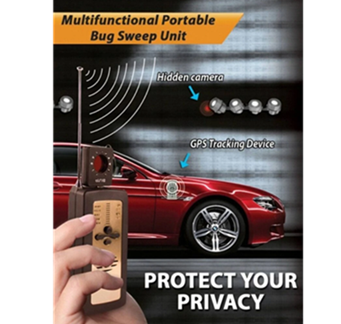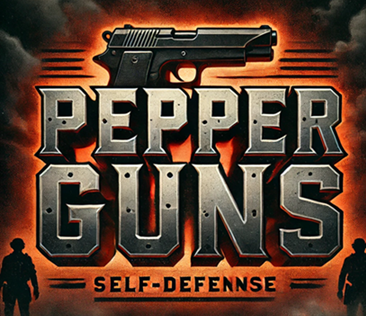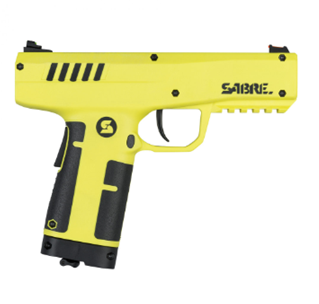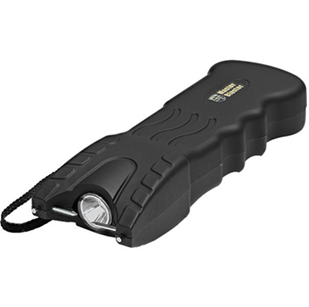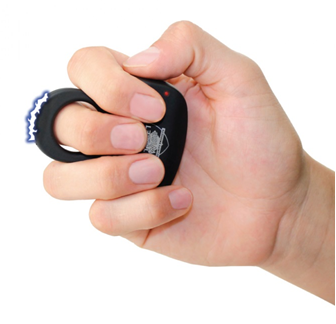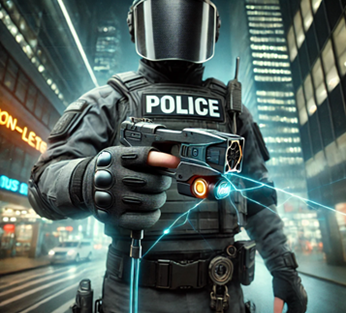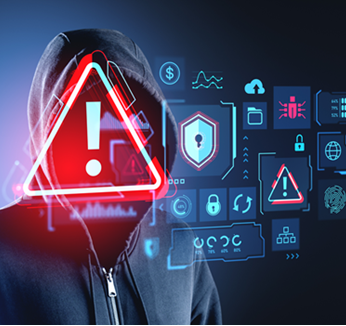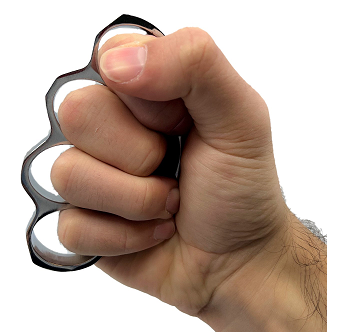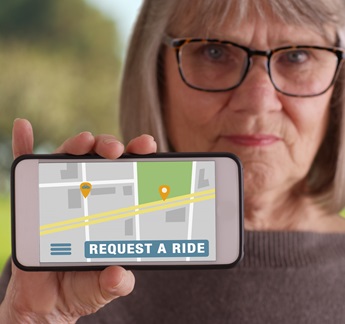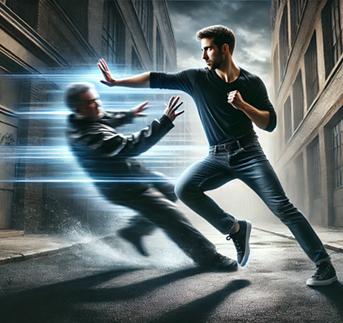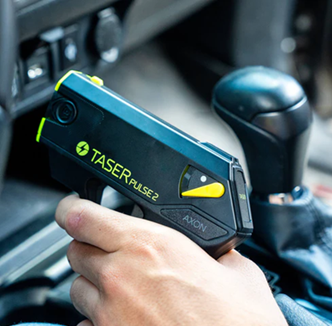How to Survive an Airplane Crash
 Airplane crashes are rare, but when they do occur, survival often depends on preparation, quick thinking, and knowing what to do. Despite the dramatic portrayal of plane crashes in movies, statistics show that the vast majority of passengers survive aviation accidents. This guide provides practical advice to increase your chances of survival before, during, and after a crash.
Airplane crashes are rare, but when they do occur, survival often depends on preparation, quick thinking, and knowing what to do. Despite the dramatic portrayal of plane crashes in movies, statistics show that the vast majority of passengers survive aviation accidents. This guide provides practical advice to increase your chances of survival before, during, and after a crash.
Before the Flight: Preparation is Key
1. Choose Your Seat Wisely
Studies have shown that passengers seated within five rows of an exit have a higher chance of survival. Consider choosing an aisle seat near the rear of the plane, as some analyses suggest it’s safer than the front.
2. Dress for Safety
Wear practical clothing: long sleeves, long pants, and closed-toe shoes. Avoid synthetic fabrics that can melt in high heat and opt for natural fibers like cotton or wool. Sturdy shoes can help you navigate debris in an emergency.
3. Familiarize Yourself with the Aircraft
Pay attention during the safety briefing. Review the safety card in the seat pocket and note the locations of the nearest exits. Count the number of rows to the closest exit, as visibility may be limited in an emergency.
4. Travel Light
Avoid overpacking your carry-on bag. In an evacuation, bulky luggage can hinder your movement and that of others.
What to Do if a Fire Starts in Your Home or at Work
 Fires can be devastating, but knowing what to do in the event of one can save lives and minimize damage. Whether at home or work, having a clear understanding of fire safety procedures is critical. This guide outlines the steps to take if a fire starts and how to prepare in advance to handle such emergencies effectively.
Fires can be devastating, but knowing what to do in the event of one can save lives and minimize damage. Whether at home or work, having a clear understanding of fire safety procedures is critical. This guide outlines the steps to take if a fire starts and how to prepare in advance to handle such emergencies effectively.
Step 1: Stay Calm and Assess the Situation
The first and most important step in any emergency is to remain calm. Panic can lead to poor decision-making, which may worsen the situation. Take a moment to assess the fire’s size and location to determine the appropriate response.
-
Small Fires: If the fire is small and contained, such as a stovetop fire or a trash can fire, you may be able to extinguish it using a fire extinguisher.
-
Large or Spreading Fires: If the fire is spreading quickly or producing a lot of smoke, evacuate immediately and call emergency services.
Step 2: Alert Others
In a workplace or shared residence, alert everyone in the building as soon as possible. Use the fire alarm system if one is available, or shout to notify others. Early warnings can save lives by giving people more time to escape.
Step 3: Evacuate Safely
When evacuating, prioritize your safety and the safety of others. Follow these guidelines:
-
Know Your Exits: Familiarize yourself with the nearest exits in your home or workplace. In workplaces, follow the posted evacuation routes.
What is the #1 Rule of Self-Defense? Avoid Bad Situations
 When it comes to self-defense, the best way to protect yourself isn’t a technique, a tool, or a weapon—it’s a mindset. The #1 rule of self-defense is simple but profound: Don’t put yourself in bad situations. By avoiding potentially dangerous circumstances, you can significantly reduce the likelihood of needing to defend yourself in the first place. Prevention is always better than confrontation, and staying out of harm’s way is the most effective self-defense strategy you can employ.
When it comes to self-defense, the best way to protect yourself isn’t a technique, a tool, or a weapon—it’s a mindset. The #1 rule of self-defense is simple but profound: Don’t put yourself in bad situations. By avoiding potentially dangerous circumstances, you can significantly reduce the likelihood of needing to defend yourself in the first place. Prevention is always better than confrontation, and staying out of harm’s way is the most effective self-defense strategy you can employ.
This article will explore why avoiding bad situations is the cornerstone of self-defense, how to identify risky scenarios, and practical tips for staying safe in everyday life.
Why Avoiding Bad Situations is the #1 Rule
The primary goal of self-defense is to protect yourself and those you care about from harm. However, no matter how skilled or prepared you are, physical confrontations always carry risks. Even the most trained individuals can get hurt or face unintended consequences. Avoiding dangerous situations minimizes these risks entirely, keeping you safe without ever needing to fight.
Here are a few reasons why this rule is so critical:
-
You Can’t Lose a Fight You Don’t Enter
Even if you’re confident in your abilities, every confrontation is unpredictable. The other person might have a weapon, be under the influence of drugs or alcohol, or have accomplices nearby. By steering clear of bad situations, you eliminate the possibility of escalation altogether. -
Legal and Ethical Implications
Self-defense often involves legal gray areas. Even if you’re justified in defending yourself, you may face legal scrutiny, lawsuits, or criminal charges. Avoiding dangerous situations spares you the potential legal and financial headaches that could arise from a confrontation.
Non-Lethal Weapons for Runners, Cyclists, and Outdoor Enthusiasts
 Outdoor activities like running, cycling, and hiking are excellent ways to stay fit, relieve stress, and connect with nature. However, they can also expose individuals to unique safety risks, such as encounters with aggressive animals, potential attackers, or hazardous situations in remote areas. For outdoor enthusiasts, carrying non-lethal weapons can be a practical solution to enhance personal safety without resorting to lethal force. In this blog post, we will explore the best non-lethal weapons tailored to the needs of runners, cyclists, and outdoor enthusiasts, along with tips for choosing, using, and maintaining them.
Outdoor activities like running, cycling, and hiking are excellent ways to stay fit, relieve stress, and connect with nature. However, they can also expose individuals to unique safety risks, such as encounters with aggressive animals, potential attackers, or hazardous situations in remote areas. For outdoor enthusiasts, carrying non-lethal weapons can be a practical solution to enhance personal safety without resorting to lethal force. In this blog post, we will explore the best non-lethal weapons tailored to the needs of runners, cyclists, and outdoor enthusiasts, along with tips for choosing, using, and maintaining them.
Why Non-Lethal Weapons?
Non-lethal weapons are designed to incapacitate or deter threats without causing permanent harm. They are particularly suitable for outdoor enthusiasts for several reasons:
-
Legal Accessibility: Most non-lethal weapons are legal to carry in many regions, making them a viable option for personal safety.
-
Ease of Use: Non-lethal weapons typically require minimal training, making them accessible for individuals of all skill levels.
-
Portability: Many non-lethal tools are lightweight and compact, ideal for carrying during physical activities.
-
Reduced Liability: Using non-lethal force reduces the risk of legal repercussions compared to using a firearm or other lethal weapons.
Top Non-Lethal Weapons for Outdoor Enthusiasts
What Are the Advantages of Carrying a Stun Gun Device?
 In an increasingly unpredictable world, personal safety has become a top priority for many individuals. One of the most popular self-defense tools available today is the stun gun. Compact, effective, and easy to use, stun guns provide a non-lethal means of protecting oneself in threatening situations. In this blog post, we will explore the numerous advantages of carrying a stun gun device, from its accessibility and effectiveness to its legal considerations and practicality.
In an increasingly unpredictable world, personal safety has become a top priority for many individuals. One of the most popular self-defense tools available today is the stun gun. Compact, effective, and easy to use, stun guns provide a non-lethal means of protecting oneself in threatening situations. In this blog post, we will explore the numerous advantages of carrying a stun gun device, from its accessibility and effectiveness to its legal considerations and practicality.
1. Non-Lethal Self-Defense Option
One of the most significant advantages of carrying a stun gun is that it provides a non-lethal way to defend yourself. Unlike firearms, stun guns are designed to incapacitate an attacker temporarily without causing permanent harm. This makes them an ideal choice for individuals who are concerned about the moral and legal consequences of using deadly force.
Stun guns work by delivering a high-voltage, low-amperage electric shock that disrupts the attacker’s muscle control and nervous system. This temporary incapacitation gives you enough time to escape the situation and seek help without inflicting lasting damage on the assailant.
2. Easy to Use
Stun guns are user-friendly devices that require minimal training to operate effectively. Most models feature a simple on/off switch and a trigger mechanism. Some advanced models even include safety features to prevent accidental discharge. Unlike firearms, which require extensive training and practice to use safely, stun guns can be mastered with minimal instruction.
Additionally, many stun guns come with built-in safety features, such as wrist straps that disable the device if it is taken away from you. This ensures that the device cannot be used against you in the event of a struggle.
How to Find a Long-Lost Friend or Relative
 Reconnecting with a long-lost friend or relative can be a deeply rewarding experience. Whether you’ve lost touch due to time, distance, or life circumstances, today’s technology and resources make it easier than ever to locate and reconnect with people. This guide will walk you through the steps to find a long-lost friend or relative, offering practical tips and tools to make the process as smooth as possible.
Reconnecting with a long-lost friend or relative can be a deeply rewarding experience. Whether you’ve lost touch due to time, distance, or life circumstances, today’s technology and resources make it easier than ever to locate and reconnect with people. This guide will walk you through the steps to find a long-lost friend or relative, offering practical tips and tools to make the process as smooth as possible.
1. Define Your Goal
Before you begin your search, take some time to clarify your intentions and goals. Understanding why you want to reconnect will guide your approach.
-
Why are you searching? Are you seeking closure, rekindling a friendship, or reuniting with family?
-
What do you hope to achieve? Be clear about your expectations for the reunion.
-
Are you prepared for any outcome? Reconnecting may bring unexpected emotions or situations, so it’s essential to be emotionally prepared.
2. Gather Information
Start by collecting all the information you have about the person you’re trying to find. The more details you have, the easier your search will be.
-
Full name: Include any nicknames, maiden names, or aliases they might have used.
-
Date of birth: Even an approximate age can be helpful.
-
Last known location: City, state, or country where they were last seen or lived.
What to Do When the Police Pull You Over to Ensuring a Safe and Smooth Interaction
 Traffic stops are a common occurrence, yet they can be a source of anxiety for many drivers. Whether you’re pulled over for a minor infraction or a more serious issue, understanding how to handle the situation can prevent misunderstandings and ensure everyone’s safety. This guide provides actionable steps to help you navigate a traffic stop calmly and effectively.
Traffic stops are a common occurrence, yet they can be a source of anxiety for many drivers. Whether you’re pulled over for a minor infraction or a more serious issue, understanding how to handle the situation can prevent misunderstandings and ensure everyone’s safety. This guide provides actionable steps to help you navigate a traffic stop calmly and effectively.
1. Stay Calm and Pull Over Safely
When you see the flashing lights of a police car behind you, it’s crucial to remain calm. Anxiety or panic can lead to poor decision-making, which might escalate the situation. Here’s what to do:
-
Acknowledge the Officer: Turn on your hazard lights to signal that you’ve seen them and are pulling over.
-
Find a Safe Spot: Pull over to the right side of the road in a safe location, such as a shoulder or parking lot. Avoid stopping in areas with heavy traffic or poor visibility.
-
Turn Off the Engine: Once parked, turn off your car’s engine to indicate that you’re not planning to flee.
-
Keep Your Hands Visible: Place your hands on the steering wheel where the officer can see them. This helps convey that you pose no threat.
2. Prepare for the Officer’s Approach
After pulling over, take a moment to prepare for the interaction. Small gestures can set the tone for a respectful exchange:
-
Roll Down Your Window: Lower your window to communicate effectively with the officer.
-
Avoid Sudden Movements: Don’t reach for your wallet, glove compartment, or any other item until instructed. Sudden movements can be misinterpreted.
Byrna Technologies: A Deep Dive into the Rising Star of Less-Lethal Self-Defense
 The story of Byrna Technologies Inc. is one of adaptation, innovation, and a keen understanding of the evolving landscape of personal security. Founded in 2005 as Security Devices International (SDI), the company initially focused on developing less-lethal solutions primarily for law enforcement and military markets. However, a shift in focus towards the consumer market, coupled with a rebranding to Byrna Technologies in 2019, propelled the company to new heights, establishing it as a leading name in the less-lethal self-defense industry.
The story of Byrna Technologies Inc. is one of adaptation, innovation, and a keen understanding of the evolving landscape of personal security. Founded in 2005 as Security Devices International (SDI), the company initially focused on developing less-lethal solutions primarily for law enforcement and military markets. However, a shift in focus towards the consumer market, coupled with a rebranding to Byrna Technologies in 2019, propelled the company to new heights, establishing it as a leading name in the less-lethal self-defense industry.Early Days and the Birth of an Idea:
The seeds of Byrna were sown by Bryan Ganz, the company's current CEO. Ganz, a successful entrepreneur with a background in the security industry, recognized a gap in the market for effective, reliable less-lethal self-defense options. He envisioned a product that could bridge the gap between traditional firearms and less effective options like pepper spray, offering a potent deterrent without the inherent lethality of a gun.This vision led to the creation of SDI and the development of the company's first product, the Byrna HD. This early launcher, while innovative, was primarily targeted towards law enforcement and private security agencies. However, Ganz soon realized the immense potential of the consumer self-defense market, particularly in a climate of increasing societal anxieties and concerns about personal safety.
The Pivotal Shift and the Rise of Byrna:
In 2019, SDI underwent a significant transformation, rebranding itself as Byrna Technologies Inc. This strategic move signaled a renewed focus on the consumer market and a commitment to developing innovative less-lethal solutions for everyday individuals. The company's flagship product, the Byrna SD, was launched, a more compact and user-friendly version of the Byrna HD, specifically designed for personal self-defense.Self-Defense for Seniors: Safety Tips and Strategies
 As we age, our physical abilities and stamina naturally change, making it important for seniors to think about their safety and security. Seniors are often more vulnerable to various types of crimes, including theft, assault, and fraud. However, by taking the right precautions and learning self-defense strategies, older adults can significantly improve their ability to protect themselves and feel more confident in their daily lives.
As we age, our physical abilities and stamina naturally change, making it important for seniors to think about their safety and security. Seniors are often more vulnerable to various types of crimes, including theft, assault, and fraud. However, by taking the right precautions and learning self-defense strategies, older adults can significantly improve their ability to protect themselves and feel more confident in their daily lives.
In this blog post, we’ll explore practical self-defense tips and strategies specifically designed for seniors, with a focus on staying safe both at home and while out in the community. These tips aim to empower seniors to take control of their safety while being mindful of their health and mobility.
1. Understanding Vulnerabilities
Before diving into self-defense strategies, it's important to understand the common vulnerabilities that seniors face. Seniors may experience:
- Decreased mobility: Aging can lead to conditions like arthritis, which can limit the ability to move quickly or react in an emergency.
- Slower reaction times: As people age, their reflexes tend to slow down, which can make it harder to defend against an attack.
- Increased isolation: Many seniors live alone, making them more vulnerable to crimes like burglary or assault.
- Health issues: Chronic health conditions, such as heart disease or diabetes, can make it difficult for seniors to defend themselves physically.
Recognizing these vulnerabilities is the first step in finding ways to mitigate risks and prepare for self-defense.
Understanding the Psychology of Robbers: What Motivates Them?
 Robberies are one of the oldest forms of crime, and despite advances in security technology and law enforcement, they remain a persistent issue worldwide. To effectively combat robbery, it is crucial to understand the underlying motivations of those who commit this crime. By delving into the psychology of robbers, we can uncover the factors that drive their behavior and develop strategies to deter them. This blog post explores the key motivations behind robberies, the psychological profiles of robbers, and what society can do to address these issues.
Robberies are one of the oldest forms of crime, and despite advances in security technology and law enforcement, they remain a persistent issue worldwide. To effectively combat robbery, it is crucial to understand the underlying motivations of those who commit this crime. By delving into the psychology of robbers, we can uncover the factors that drive their behavior and develop strategies to deter them. This blog post explores the key motivations behind robberies, the psychological profiles of robbers, and what society can do to address these issues.
The Basics of Robbery
Before diving into the psychology of robbers, it’s essential to understand what constitutes robbery. Legally, robbery is defined as the act of taking property from another person through force, intimidation, or threat. Unlike theft, robbery involves direct confrontation with the victim, making it a more personal and often traumatic crime.
Robberies can occur in various settings, such as homes, businesses, or public spaces, and can range from petty crimes to highly organized heists. The motivations behind these crimes are as diverse as the methods employed by robbers.
Types of Robbers
Not all robbers are the same, and understanding their differences is key to identifying their motivations. Broadly, robbers can be categorized into the following types:
-
Opportunistic Robbers
-
These individuals commit robbery on impulse, often without much planning. They take advantage of easy targets, such as an unlocked car or a distracted pedestrian. Their primary motivation is convenience rather than necessity or greed.
-
What's the Difference Between the Discontinued TASER Pulse Plus and the New TASER Pulse 2?
 The TASER Pulse Plus and the TASER Pulse 2 are both popular self-defense tools, but there are key differences between the two models. While the TASER Pulse Plus has been discontinued and is no longer available for purchase, the TASER Pulse 2 is the new model on the market. In this article, we’ll compare the TASER Pulse Plus and the TASER Pulse 2 based on the features outlined in their official product manuals.
The TASER Pulse Plus and the TASER Pulse 2 are both popular self-defense tools, but there are key differences between the two models. While the TASER Pulse Plus has been discontinued and is no longer available for purchase, the TASER Pulse 2 is the new model on the market. In this article, we’ll compare the TASER Pulse Plus and the TASER Pulse 2 based on the features outlined in their official product manuals.
Key Features of the TASER Pulse 2
The TASER Pulse 2 is a compact, powerful self-defense device designed for civilian use. Based on the manual, its main features include:
- Effective Range: The TASER Pulse 2 offers an effective range of 15 feet, allowing users to incapacitate an attacker from a safe distance.
- TASER Smart Technology: This technology temporarily incapacitates an attacker by disrupting their neuromuscular system. It ensures that the device delivers a powerful shock while minimizing the risk of permanent injury.
- Compact and Lightweight: The Pulse 2 is designed to be small and portable, making it easy to carry and deploy quickly in an emergency.
- Ease of Use: With a simple trigger mechanism, the Pulse 2 is easy to operate, even under stress.
Key Features of the TASER Pulse Plus
The TASER Pulse Plus, which has been discontinued, also shares many features with the Pulse 2, but there is one key difference that sets it apart:
- Effective Range: Like the Pulse 2, the TASER Pulse Plus has an effective range of 15 feet.
The Rise in Self-Defense Non-lethal Weapon Sales
 In recent years, the demand for self-defense weapons has seen a significant surge. From pepper spray and stun guns to personal alarms and tactical flashlights, consumers are increasingly seeking non-lethal tools to enhance their personal safety. This trend is driven by a combination of heightened safety concerns, evolving legal frameworks, and a growing awareness of alternative self-defense strategies. In this blog post, we will explore the factors contributing to this rise, the types of self-defense tools gaining popularity, and the implications for individuals and society.
In recent years, the demand for self-defense weapons has seen a significant surge. From pepper spray and stun guns to personal alarms and tactical flashlights, consumers are increasingly seeking non-lethal tools to enhance their personal safety. This trend is driven by a combination of heightened safety concerns, evolving legal frameworks, and a growing awareness of alternative self-defense strategies. In this blog post, we will explore the factors contributing to this rise, the types of self-defense tools gaining popularity, and the implications for individuals and society.
Why Are Self-Defense Weapons Becoming More Popular?
1. Increasing Safety Concerns
The modern world is rife with challenges to personal security. Reports of rising crime rates in certain areas, coupled with sensationalized media coverage, have led to heightened fears of being targeted. For example, the FBI’s Uniform Crime Reporting (UCR) program has documented fluctuations in violent crime rates, with many individuals interpreting these trends as a call to be better prepared.
High-profile incidents of public violence, such as mass shootings or random attacks, have further fueled anxiety. In response, many people are turning to self-defense tools as a way to feel more secure in their daily lives. According to a recent report from Fox News, sales of items like pepper spray and stun guns have increased significantly in urban areas where concerns about personal safety are particularly acute.
2. Restrictive Firearm Regulations
Stricter gun control laws in many states have made it more challenging for individuals to obtain firearms for self-defense. While firearms remain a common choice for home protection, many people are seeking non-lethal alternatives that are easier to acquire and legally carry. Tools like pepper spray and stun guns often have fewer regulatory hurdles, making them an attractive option for individuals who may not wish to navigate the complexities of firearm ownership.
Review of the Hike 'n Strike 950,000 Volts Stun Walking Cane
 In the ever-evolving landscape of personal safety and outdoor adventure gear, the ZAP™ Hike 'n Strike™ 950,000 Volts Stun Walking Cane stands out as a multifunctional tool that combines practicality, safety, and innovative design. Designed for hiking, camping, and everyday walking, this product doubles as a reliable trekking staff and a formidable self-defense device. Here, we’ll dive into its features, usability, performance, and potential drawbacks to offer a comprehensive review.
In the ever-evolving landscape of personal safety and outdoor adventure gear, the ZAP™ Hike 'n Strike™ 950,000 Volts Stun Walking Cane stands out as a multifunctional tool that combines practicality, safety, and innovative design. Designed for hiking, camping, and everyday walking, this product doubles as a reliable trekking staff and a formidable self-defense device. Here, we’ll dive into its features, usability, performance, and potential drawbacks to offer a comprehensive review.
Key Features
The Hike 'n Strike walking cane boasts a range of features tailored for outdoor enthusiasts and safety-conscious individuals:
-
High-Voltage Stun Device
At the heart of its design is a 950,000-volt stun device. This is not just a walking aid; it’s a powerful self-defense tool. The device's ZAP™ patented EXTREME Spike Electrodes enhance its effectiveness, providing a deterrent against potential threats. Delivering 4.6 milliamps, the stun feature is capable of incapacitating an attacker, giving you time to escape or call for help. -
Expandable Hiking Staff
The cane extends up to 56 inches and collapses to 29 inches, making it versatile for hikers of different heights or walking preferences. The extendable design also makes it easy to pack for trips or adjust to specific terrains. -
Built-In Flashlight
Equipped with a removable flashlight cap, the Hike 'n Strike ensures you can illuminate your path during low-light conditions. This feature is especially valuable for nighttime adventures or emergencies.
Using Technology to Catch a Cheating Spouse
 Infidelity can be one of the most painful betrayals in a relationship. When suspicions arise, it’s natural to want the truth. Technology has revolutionized how people communicate and connect, but it’s also provided tools that can expose dishonesty. If you suspect your spouse is cheating, there are tech-based methods you can use to uncover the truth. However, before diving in, it’s crucial to understand the ethical and legal implications of using these tools. This guide will help you navigate this sensitive situation responsible
Infidelity can be one of the most painful betrayals in a relationship. When suspicions arise, it’s natural to want the truth. Technology has revolutionized how people communicate and connect, but it’s also provided tools that can expose dishonesty. If you suspect your spouse is cheating, there are tech-based methods you can use to uncover the truth. However, before diving in, it’s crucial to understand the ethical and legal implications of using these tools. This guide will help you navigate this sensitive situation responsible
Signs of Cheating in the Digital Age
Before employing technology, observe for signs that may suggest infidelity:
-
Unexplained Behavior Changes: Increased secrecy about their phone or computer usage.
-
Unusual Phone Habits: Frequent texting, clearing call logs, or keeping the phone on silent.
-
Social Media Activity: Over-engagement on platforms or unusual interactions with specific individuals.
-
Location Inconsistencies: Discrepancies in where they claim to be and where they actually are.
These behaviors can be warning signs, but they are not definitive proof. Technology can help confirm or refute your suspicions.
Technological Tools to Catch a Cheating Spouse
1. Smartphone Monitoring
Smartphones often hold the key to understanding someone’s activities. Here are some ways to monitor phone activity:
Byrna Pepper Guns vs. Traditional Firearms: Which is Right for You?
 When it comes to personal safety and home defense, selecting the right tool is a critical decision. Traditional firearms have long been the go-to choice for many, but the emergence of non-lethal options like Byrna pepper guns offers a compelling alternative. Whether you’re new to self-defense or reevaluating your safety measures, this guide will help you decide which option is best for your needs.
When it comes to personal safety and home defense, selecting the right tool is a critical decision. Traditional firearms have long been the go-to choice for many, but the emergence of non-lethal options like Byrna pepper guns offers a compelling alternative. Whether you’re new to self-defense or reevaluating your safety measures, this guide will help you decide which option is best for your needs.
Understanding Byrna Pepper Guns
Byrna pepper guns are innovative, non-lethal self-defense tools designed to incapacitate threats without causing permanent harm. These CO2-powered devices fire projectiles filled with irritants, such as pepper spray or tear gas, from a distance of up to 60 feet. They’re lightweight, portable, and designed for ease of use, making them an attractive option for those who prefer to avoid traditional firearms.
Traditional Firearms: A Longstanding Option
Traditional firearms, including pistols, rifles, and shotguns, have been a cornerstone of self-defense for centuries. Firearms offer unmatched stopping power, long-range capabilities, and reliability in life-threatening situations. However, they also come with significant responsibilities, legal obligations, and risks.
Key Factors to Consider
When deciding between a Byrna pepper gun and a traditional firearm, it’s essential to weigh various factors. Let’s explore these in depth:
TASER Pulse 2 Product Launch – Compact, Powerful, and Built for Protection
 In an increasingly unpredictable world, personal safety is a top priority. Enter the TASER Pulse 2, a groundbreaking innovation designed to provide you with unparalleled protection in the palm of your hand. Built with cutting-edge technology, this non-lethal self-defense device offers reliability, ease of use, and peace of mind, making it an essential addition to your safety arsenal.
In an increasingly unpredictable world, personal safety is a top priority. Enter the TASER Pulse 2, a groundbreaking innovation designed to provide you with unparalleled protection in the palm of your hand. Built with cutting-edge technology, this non-lethal self-defense device offers reliability, ease of use, and peace of mind, making it an essential addition to your safety arsenal.
Unveiling the TASER Pulse 2: Key Features
The TASER Pulse 2 represents the pinnacle of self-defense technology, boasting several advanced features that set it apart from other personal safety devices. Whether you are a seasoned user or a first-time owner, the Pulse 2 is tailored to meet your needs.
Compact and Lightweight Design
The TASER Pulse 2 is engineered with portability in mind. Weighing just under half a pound and slightly larger than a smartphone, it’s easy to carry in a purse, glove compartment, or concealed holster. The sleek, ergonomic design ensures a comfortable grip, enabling quick deployment when seconds matter most.
Improved Range and Accuracy
Equipped with an advanced targeting system, the TASER Pulse 2 delivers precision like never before. With a range of up to 15 feet, it allows you to neutralize threats from a safe distance. Its red laser sight ensures pinpoint accuracy, while the high-visibility LED flashlight enhances performance in low-light conditions.
Byrna Pepper Guns vs. Stun Guns: Choosing the Right Self-Defense Tool
 In today's world, personal safety is a priority, and there are a wide variety of self-defense tools available. Two popular options are Byrna Pepper Guns and stun guns. Each of these tools has unique features, strengths, and limitations, making them suitable for different situations and personal preferences. In this guide, we’ll delve into the mechanics, effectiveness, legality, and pros and cons of Byrna Pepper Guns and stun guns to help you make an informed decision on the best self-defense option for you.
In today's world, personal safety is a priority, and there are a wide variety of self-defense tools available. Two popular options are Byrna Pepper Guns and stun guns. Each of these tools has unique features, strengths, and limitations, making them suitable for different situations and personal preferences. In this guide, we’ll delve into the mechanics, effectiveness, legality, and pros and cons of Byrna Pepper Guns and stun guns to help you make an informed decision on the best self-defense option for you.
Section 1: Overview of Byrna Pepper Guns
1.1 What is a Byrna Pepper Gun?
The Byrna Pepper Gun is a non-lethal, CO₂-powered self-defense tool designed to fire pepper-filled projectiles at a distance. Byrna guns are ideal for users who want to keep a safe distance from potential threats while incapacitating an attacker without causing lasting harm.
1.2 How It Works
Byrna guns use compressed CO₂ to propel small projectiles filled with chemical irritants. These projectiles burst on impact, releasing a pepper-based or chemical irritant that can cause intense discomfort, temporarily impairing vision and respiratory function, and disorienting the attacker.
1.3 Types of Ammo for Byrna Guns
Byrna offers various types of ammunition:
- Pepper Projectiles: Filled with OC (oleoresin capsicum), the active ingredient in pepper spray, which irritates the eyes, skin, and respiratory system.
- Kinetic Projectiles: Solid rounds designed to deliver a painful impact without releasing any irritants.
Stun Guns for Home Defense: What You Should Know
 In an era where personal safety is paramount, many homeowners are exploring various options for home defense. Among these options, stun guns have gained popularity as a non-lethal alternative to traditional firearms. This comprehensive guide will delve into the world of stun guns for home defense, providing you with essential information to make an informed decision about incorporating this tool into your home security strategy.
In an era where personal safety is paramount, many homeowners are exploring various options for home defense. Among these options, stun guns have gained popularity as a non-lethal alternative to traditional firearms. This comprehensive guide will delve into the world of stun guns for home defense, providing you with essential information to make an informed decision about incorporating this tool into your home security strategy.
Understanding Stun Guns
Stun guns are handheld electronic devices designed to incapacitate an attacker by delivering a high-voltage, low-amperage electrical shock. Unlike tasers, which can be deployed from a distance, stun guns require direct contact with the assailant to be effective.How Stun Guns Work
When activated, a stun gun creates an electrical circuit between two electrodes. Upon contact with an attacker, it delivers a shock that causes muscle spasms and disorientation. This effect is temporary but provides crucial moments for the user to escape or seek help.The electrical discharge from a stun gun interferes with the body's neuromuscular system, causing:- Muscle contractions
- Temporary paralysis
- Mental disorientation
- Loss of balance
Use a Stun Guns for Venomous Bites: Myth or Danger?
 In survival situations, people sometimes turn to unconventional methods when faced with venomous bites or stings, hoping for fast relief. One popularized yet controversial approach involves using a stun gun or electric shock to neutralize venom. Proponents argue that the shock can break down venom proteins and relieve pain. However, there’s no scientific backing for these claims, and using a stun gun on a venomous bite can actually increase risks.
In survival situations, people sometimes turn to unconventional methods when faced with venomous bites or stings, hoping for fast relief. One popularized yet controversial approach involves using a stun gun or electric shock to neutralize venom. Proponents argue that the shock can break down venom proteins and relieve pain. However, there’s no scientific backing for these claims, and using a stun gun on a venomous bite can actually increase risks.
This article explores the origins of this myth, examines the science (or lack thereof) behind it, highlights potential dangers, and offers safer, medically endorsed alternatives.
1. The Origin of the Stun Gun Myth
The idea of using electricity to treat venomous bites gained some popularity after anecdotal accounts and reports emerged in the 1980s and 1990s. Various survivalists and outdoor enthusiasts claimed that a small shock from a stun gun relieved pain or neutralized venom. This technique was rumored to have been tried on jellyfish stings, scorpion stings, and even snake bites.
Although these stories spread, no reputable medical studies confirmed the method’s effectiveness. In fact, the American Medical Association, venom experts, and toxicologists have all debunked the idea as ineffective and potentially dangerous. The survival community, however, sometimes still shares it as an “emergency trick.”
2. Understanding How Stun Guns Work
A stun gun is a self-defense tool designed to deliver a high-voltage, low-amperage shock. When used in self-defense, the electric shock causes pain and temporarily immobilizes muscles by disrupting the nervous system.
- Voltage and Amperage: Stun guns generally range from 10,000 to 50,000 volts. They deliver a shock strong enough to cause pain without penetrating deep into tissue or affecting the heart.
Stun Gun vs. Pepper Spray: Which is the Better Choice for Personal Safety?
 As personal safety becomes an increasingly important topic, many people are turning to non-lethal self-defense tools like stun guns and pepper spray to protect themselves. Both tools can effectively incapacitate an attacker and give the user time to escape, but they work in distinct ways and offer different advantages. This article explores the pros and cons of each option to help you make an informed decision.
As personal safety becomes an increasingly important topic, many people are turning to non-lethal self-defense tools like stun guns and pepper spray to protect themselves. Both tools can effectively incapacitate an attacker and give the user time to escape, but they work in distinct ways and offer different advantages. This article explores the pros and cons of each option to help you make an informed decision.
Understanding Stun Guns and Pepper Spray
Stun guns are high-voltage, low-amperage devices that deliver an electric shock when they make direct contact with an attacker. This shock causes muscle contraction and temporary immobilization, allowing the user to escape. Stun guns come in various forms, from small handheld models to baton-like devices and even disguised forms like flashlights. They require close contact to be effective, making them suitable for situations where direct engagement is feasible.
Pepper spray is a chemical agent made from Oleoresin Capsicum (OC), a compound derived from chili peppers. When sprayed toward an attacker’s face, it causes intense pain, temporary blindness, and difficulty breathing. Pepper spray can incapacitate from a distance, allowing the user to maintain space. It’s available in various forms, such as sprays, gels, and foams, each tailored to different settings and environmental considerations.
Effectiveness of Stun Guns and Pepper Spray
Pros and Cons of Stun Guns: Stun guns are highly effective at incapacitating attackers when used correctly. When applied to areas with large muscle groups, they can immobilize an attacker within seconds. This direct engagement, however, requires close proximity, making stun guns best suited for individuals who feel comfortable with close-quarter defense.
Personal Safety Tips for Hikers: Staying Safe on the Trails
 Hiking is a wonderful way to connect with nature, get exercise, and clear your mind. However, as exhilarating as it is, hiking also comes with risks. Whether you’re tackling rugged mountain paths or enjoying a leisurely stroll through a local forest, it’s crucial to prioritize personal safety. In this post, we will explore practical tips and strategies to ensure that your time outdoors remains safe and enjoyable.
Hiking is a wonderful way to connect with nature, get exercise, and clear your mind. However, as exhilarating as it is, hiking also comes with risks. Whether you’re tackling rugged mountain paths or enjoying a leisurely stroll through a local forest, it’s crucial to prioritize personal safety. In this post, we will explore practical tips and strategies to ensure that your time outdoors remains safe and enjoyable.
1. Plan Ahead
One of the most important steps for ensuring personal safety during a hike begins before you even leave home: planning. A well-prepared hiker is far more likely to stay safe on the trails.
Research the Trail
Before setting out, familiarize yourself with the trail. Check its length, difficulty, and elevation gain to make sure it's suitable for your fitness level and experience. Look for information about potential hazards such as steep drops, slippery paths, or wildlife in the area. Many national parks and hiking websites provide detailed trail descriptions and user reviews.
Check Weather Conditions
Weather conditions can drastically change the nature of your hike. Always check the weather forecast before leaving. If there's a chance of rain, snow, or extreme heat, it may be best to reschedule. Unpredictable weather, such as thunderstorms or heavy fog, can increase the risk of accidents or getting lost. Always be ready to adapt or turn back if conditions worsen.
What is an OTF Knife?
 Knives are one of the oldest tools known to humankind, evolving over centuries into a vast array of specialized designs for various uses. Among the more modern developments in this category is the out-the-front (OTF) knife, a unique and innovative design that has gained popularity in recent years. Whether you're a knife enthusiast, a collector, or someone considering an OTF knife for everyday carry (EDC) or self-defense, understanding what an OTF knife is and how it works is essential.
Knives are one of the oldest tools known to humankind, evolving over centuries into a vast array of specialized designs for various uses. Among the more modern developments in this category is the out-the-front (OTF) knife, a unique and innovative design that has gained popularity in recent years. Whether you're a knife enthusiast, a collector, or someone considering an OTF knife for everyday carry (EDC) or self-defense, understanding what an OTF knife is and how it works is essential.
What is an OTF Knife?
An out-the-front (OTF) knife is a type of switchblade where the blade deploys and retracts directly from the front of the handle, as opposed to folding out from the side. Unlike traditional folding knives, OTF knives use a sliding mechanism powered by a spring, allowing the blade to "shoot" straight out from the front. These knives are often automatic, meaning the blade can be extended or retracted with the press of a button or slider.
OTF knives are highly valued for their quick deployment, compact design, and one-handed operation, making them a popular choice among tactical users, outdoor enthusiasts, and collectors alike.
History of OTF Knives
While switchblades and automatic knives have been around for well over a century, the development of OTF knives came about as a specific response to the need for faster and more efficient blade deployment. Early versions of OTF knives were used by military personnel during World War II and in subsequent conflicts, where quick access to a blade was often crucial in survival situations.
The design continued to evolve throughout the 20th century, with major improvements in spring technology and the materials used for the blade and handle. Today, OTF knives are considered a versatile and reliable tool for a range of applications, from everyday tasks to professional use.
When and Where to Carry a Stun Gun: Situational Awareness for Self-Defense
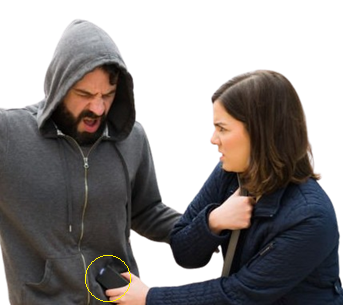 When it comes to personal safety, being prepared is crucial. Self-defense tools like stun guns are becoming increasingly popular due to their non-lethal nature, ease of use, and effectiveness in deterring threats. However, carrying a stun gun isn’t just about having the device with you—it’s about knowing when and where to carry it to maximize your safety without compromising legal or personal risks. In this guide, we’ll explore how situational awareness plays a key role in self-defense and provide insights on where and when it’s appropriate to carry a stun gun.
When it comes to personal safety, being prepared is crucial. Self-defense tools like stun guns are becoming increasingly popular due to their non-lethal nature, ease of use, and effectiveness in deterring threats. However, carrying a stun gun isn’t just about having the device with you—it’s about knowing when and where to carry it to maximize your safety without compromising legal or personal risks. In this guide, we’ll explore how situational awareness plays a key role in self-defense and provide insights on where and when it’s appropriate to carry a stun gun.
The Importance of Situational Awareness
Situational awareness is the foundation of personal safety. It involves being aware of your surroundings, understanding potential threats, and recognizing opportunities to avoid danger. When carrying a stun gun, situational awareness helps you decide if and when to deploy it and ensures that you're prepared to use it if needed.
The key components of situational awareness include:
- Understanding your environment: Be aware of the general safety of your location. Are you in a well-lit, open area or a secluded, dark alley?
- Identifying potential threats: Pay attention to people around you. Does anyone seem to be acting suspiciously or behaving aggressively?
- Recognizing escape routes and options: Look for exits, safe spaces, or areas where you can get help if needed.
How Effective is Pepper Spray for Self-Defense?
 Pepper spray has long been regarded as one of the most popular and effective self-defense tools on the market. It's non-lethal, relatively easy to carry, and accessible to many, making it a prime choice for those who want to ensure their personal safety. But how effective is pepper spray for self-defense, really? Let’s dive into the mechanics, benefits, limitations, and best practices for using pepper spray.
Pepper spray has long been regarded as one of the most popular and effective self-defense tools on the market. It's non-lethal, relatively easy to carry, and accessible to many, making it a prime choice for those who want to ensure their personal safety. But how effective is pepper spray for self-defense, really? Let’s dive into the mechanics, benefits, limitations, and best practices for using pepper spray.
What is Pepper Spray?
Pepper spray, also known as OC spray (short for oleoresin capsicum), is a chemical compound derived from hot peppers, such as cayenne. The primary ingredient, capsaicin, is what makes it effective in incapacitating attackers. When sprayed, pepper spray causes a series of temporary yet severe reactions in the human body, particularly the eyes, respiratory system, and skin.
The burning sensation pepper spray induces can immobilize an attacker for several minutes, providing the victim a crucial window to escape. Typical reactions include:
- Intense eye pain and involuntary closure of the eyes
- Difficulty breathing due to inflammation of the mucous membranes
- Burning skin where the spray makes contact
- Temporary blindness or severely blurred vision
- Nasal discharge and coughing
These symptoms can last anywhere from 15 to 45 minutes, giving the victim ample time to leave the scene and find safety.
How to Safely Carry and Use a Stun Gun: Tips for Beginners
 When it comes to personal safety, more and more people are turning to non-lethal self-defense tools to protect themselves. Among these, stun guns are gaining popularity due to their effectiveness and ease of use. However, like any self-defense tool, owning and using a stun gun requires responsibility and knowledge to ensure it is both safe and effective. In this blog post, we’ll dive into practical tips for beginners on how to safely carry and use a stun gun.
When it comes to personal safety, more and more people are turning to non-lethal self-defense tools to protect themselves. Among these, stun guns are gaining popularity due to their effectiveness and ease of use. However, like any self-defense tool, owning and using a stun gun requires responsibility and knowledge to ensure it is both safe and effective. In this blog post, we’ll dive into practical tips for beginners on how to safely carry and use a stun gun.
What Is a Stun Gun?
A stun gun is a handheld, non-lethal device that delivers a high-voltage electrical shock to temporarily incapacitate an attacker. Unlike a Taser, which shoots electrical probes at a distance, stun guns require direct contact with the target. They work by disrupting the attacker’s muscle control, causing pain and disorientation, giving you time to escape the situation. Stun guns are typically small, portable, and easy to conceal, making them ideal for personal protection.
Why Carry a Stun Gun?
Many people prefer carrying a stun gun over other self-defense tools, such as pepper spray or firearms, because they offer several advantages:
- Non-Lethal: Stun guns are designed to incapacitate without causing long-term harm, making them a safer choice for both the user and the attacker.
- Portable: Stun guns come in a variety of shapes and sizes, some even disguised as everyday objects like flashlights or cell phones, making them easy to carry discreetly.
- Easy to Use: Most stun guns are user-friendly, requiring only the press of a button to operate.
- Legal in Most Places: While laws vary by location, stun guns are legal in many states and cities, often with fewer restrictions than firearms.
What Features Should I Look For When Buying a Stun Gun?
 Stun guns are increasingly popular tools for personal safety, offering a non-lethal way to protect yourself in dangerous situations. But with so many options on the market, choosing the right stun gun can feel overwhelming. To make an informed decision, it’s important to understand the key features that distinguish one stun gun from another. Whether you’re buying for personal use or to add to your self-defense toolkit, here’s what you need to consider when purchasing a stun gun.
Stun guns are increasingly popular tools for personal safety, offering a non-lethal way to protect yourself in dangerous situations. But with so many options on the market, choosing the right stun gun can feel overwhelming. To make an informed decision, it’s important to understand the key features that distinguish one stun gun from another. Whether you’re buying for personal use or to add to your self-defense toolkit, here’s what you need to consider when purchasing a stun gun.
1. Voltage and Power Output
One of the most critical factors in selecting a stun gun is its voltage. Stun guns work by delivering a high-voltage, low-amperage electrical charge that disrupts muscle control and immobilizes an attacker temporarily. Higher voltage generally means a stronger and quicker shock, although it doesn’t necessarily translate to better incapacitation. Most stun guns on the market today range from 1 million to 30 million volts or more.
- Low voltage (under 5 million volts): These stun guns can still be effective but may require longer contact to subdue an attacker.
- Moderate voltage (5 million to 15 million volts): This range is a good middle ground for personal defense and offers a reliable balance between power and control.
- High voltage (over 20 million volts): Stun guns with very high voltage can incapacitate an attacker more quickly but may drain the battery faster.
For most users, a moderate voltage stun gun is adequate for personal protection, but those in high-risk situations might opt for higher voltage models for extra stopping power.
Understanding the Laws Around Concealed Carry of Self-Defense Weapons
 Carrying a self-defense weapon can give you peace of mind and a sense of security in today’s world. However, before deciding to carry, it’s essential to understand the legal framework surrounding concealed carry of self-defense tools. Laws vary by state and locality, and failing to comply can result in fines, jail time, or even losing your right to carry such items. This guide aims to break down the most important considerations when it comes to legally carrying self-defense weapons concealed.
Carrying a self-defense weapon can give you peace of mind and a sense of security in today’s world. However, before deciding to carry, it’s essential to understand the legal framework surrounding concealed carry of self-defense tools. Laws vary by state and locality, and failing to comply can result in fines, jail time, or even losing your right to carry such items. This guide aims to break down the most important considerations when it comes to legally carrying self-defense weapons concealed.
Why Understanding the Law is Important
Carrying a self-defense weapon like pepper spray, pepper gun, a stun gun, Taser or even a firearm may seem straightforward. However, ignorance of the law is no defense in court. Each state in the U.S. has its own set of regulations governing what self-defense weapons you can carry, how you can carry them, and where you can carry them. Violating these laws, even unknowingly, can result in criminal charges that might carry severe penalties.
Being aware of and following these laws ensures you stay on the right side of the law while still being able to protect yourself. Moreover, understanding these laws will help you navigate how and where you can carry specific tools—whether you're walking down the street, traveling, or entering certain venues like schools or government buildings.
Types of Self-Defense Weapons Covered Under Concealed Carry Laws
Different types of self-defense weapons are subject to varying laws depending on where you live. Let’s break down some of the most common:
The Hidden Dangers of Full-Face Snorkel Masks
 When planning a tropical vacation, snorkeling often tops the list of exciting activities. The idea of gliding through clear waters, witnessing vibrant marine life up close, appeals to adventurers and casual tourists alike. With the growing popularity of full-face snorkel masks, this activity seems even more accessible, offering convenience and a panoramic underwater view. But recent incidents, like the couple who recently drowned in Hawaii (see video below), have cast a shadow over their use, with tragic accidents shedding light on potential dangers. This post will explore those risks, how to choose the safest equipment, and steps to protect yourself while snorkeling.
When planning a tropical vacation, snorkeling often tops the list of exciting activities. The idea of gliding through clear waters, witnessing vibrant marine life up close, appeals to adventurers and casual tourists alike. With the growing popularity of full-face snorkel masks, this activity seems even more accessible, offering convenience and a panoramic underwater view. But recent incidents, like the couple who recently drowned in Hawaii (see video below), have cast a shadow over their use, with tragic accidents shedding light on potential dangers. This post will explore those risks, how to choose the safest equipment, and steps to protect yourself while snorkeling.
The Rise of Full-Face Snorkel Masks
Full-face snorkel masks have revolutionized the way people experience snorkeling. Traditional snorkeling gear consists of two separate components: a mask that covers the eyes and nose, and a snorkel tube used for breathing through the mouth. For beginners, this design can feel awkward, as breathing through the mouth takes getting used to. Enter full-face snorkel masks, which offer an integrated design allowing you to breathe naturally through both the nose and mouth. The mask covers the entire face, and the snorkel is affixed at the top, creating a seamless experience for novices.
Their design also provides a 180-degree field of view, significantly improving visibility underwater. For people less familiar with swimming, the combination of natural breathing and a wide view is appealing. These masks became an instant hit, especially among tourists in destinations like Hawaii, where snorkeling is a key attraction. However, their popularity has coincided with growing concerns about safety risks.
How to Prevent Being Sex Trafficked
 Sex trafficking is a grave violation of human rights that affects millions of individuals worldwide. According to the International Labour Organization (ILO), nearly 4.8 million people are trapped in situations of forced sexual exploitation at any given time. It can happen to anyone, regardless of age, gender, nationality, or background. While governments and organizations work tirelessly to combat sex trafficking, individuals can take proactive steps to protect themselves and others from falling into the clutches of traffickers. In this article, we’ll explore practical strategies and tips that can help prevent becoming a victim of sex trafficking.
Sex trafficking is a grave violation of human rights that affects millions of individuals worldwide. According to the International Labour Organization (ILO), nearly 4.8 million people are trapped in situations of forced sexual exploitation at any given time. It can happen to anyone, regardless of age, gender, nationality, or background. While governments and organizations work tirelessly to combat sex trafficking, individuals can take proactive steps to protect themselves and others from falling into the clutches of traffickers. In this article, we’ll explore practical strategies and tips that can help prevent becoming a victim of sex trafficking.
1. Understanding the Tactics of Traffickers
Sex traffickers often use manipulation, deceit, and coercion to lure victims. They may pretend to offer a job, a relationship, or assistance in difficult situations. Understanding how traffickers operate can help you recognize red flags and protect yourself. Some common tactics include:
-
False Job Opportunities: Traffickers may advertise fake job listings, particularly for modeling, nannying, or entertainment roles. These listings are designed to attract vulnerable individuals looking for work.
-
Online Grooming: Traffickers use social media and dating apps to build trust with potential victims. They may pose as romantic partners or mentors to manipulate individuals into a situation where they can be exploited.
-
Debt Bondage: Victims are sometimes coerced into sex trafficking by traffickers who claim that the victim owes them money, or they may provide shelter or transportation, demanding sex as repayment.
Top 5 Scenarios Where Byrna Launchers Can Protect You
 Byrna launchers, particularly their non-lethal pepper projectiles, are becoming increasingly popular for personal and home defense. These launchers provide an effective and safe means of protecting yourself and your loved ones in situations where firearms may not be an option, or where lethal force is not warranted. Here are five real-life scenarios where Byrna launchers could be a game-changer for self-defense.
Byrna launchers, particularly their non-lethal pepper projectiles, are becoming increasingly popular for personal and home defense. These launchers provide an effective and safe means of protecting yourself and your loved ones in situations where firearms may not be an option, or where lethal force is not warranted. Here are five real-life scenarios where Byrna launchers could be a game-changer for self-defense.
1. Home Invasion or Burglary
Home is a place where everyone expects to feel safe, but unfortunately, home invasions and burglaries do happen. In these situations, time is of the essence, and a Byrna pepper launcher could give you the means to defend your space without resorting to lethal force.
Why it’s effective: Byrna pepper projectiles are designed to incapacitate attackers by releasing a powerful pepper powder that causes intense discomfort, temporary blindness, and difficulty breathing. This non-lethal solution buys time for you and your family to escape, call authorities, or further secure your property.
Real-life advantage: In cases where you may not feel comfortable or legally justified in using a firearm, Byrna offers the chance to stop an intruder in their tracks without fatal consequences. Additionally, because the Byrna is compact and lightweight, it’s easy to store within reach in a home, making it an ideal choice for quick defensive action during an emergency.
2. Carjacking or Road Rage Incidents
Driving can sometimes expose you to aggressive drivers or even potential carjackers. In such moments, it’s important to have a defense tool that can deter an attacker while minimizing risk to yourself and others.
































